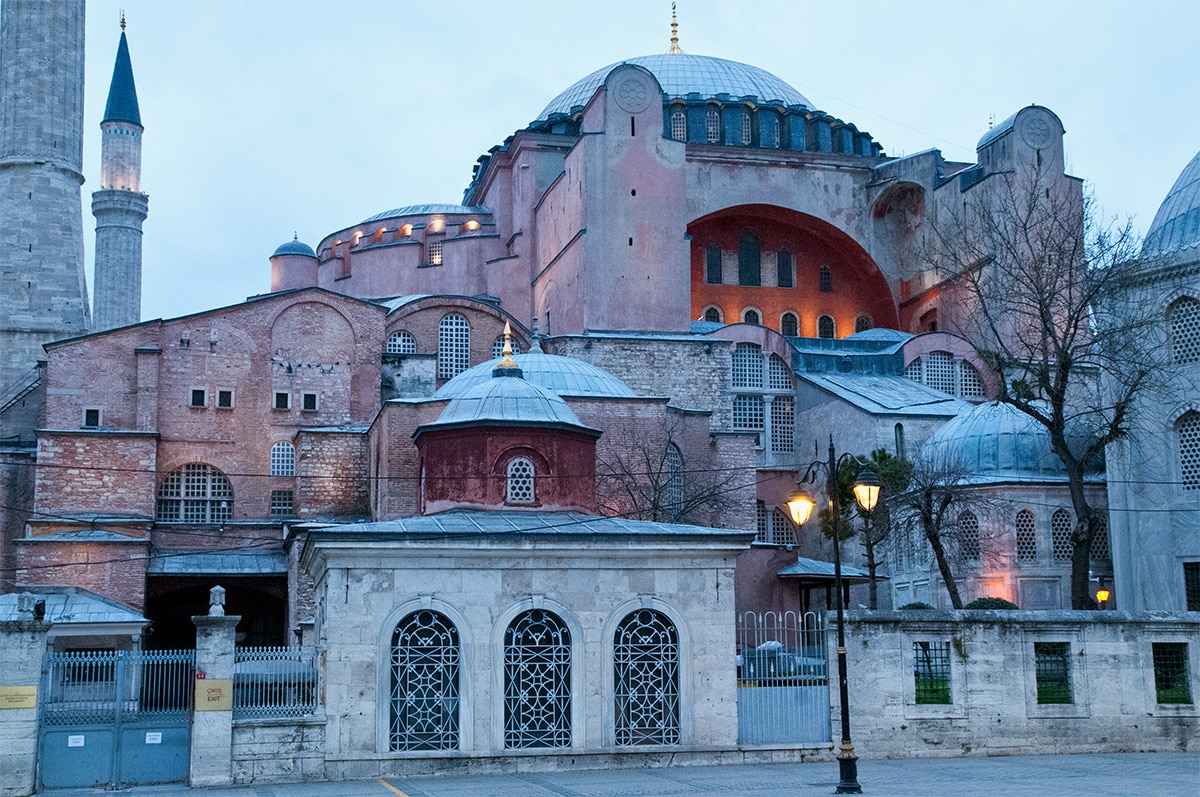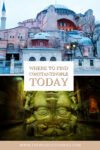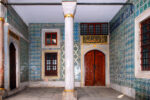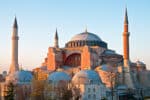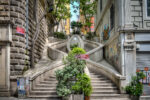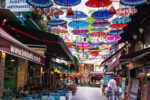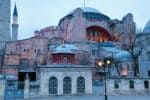Constantinople was one of the greatest cities in the world, the power seat of two major empires for over a thousand years. But where is Constantinople today? Well, it is hidden in plain sight in the heart of Istanbul, within the crumbling Constantinople Walls.
Looking for Constantinople in Istanbul is a fascinating journey of discovering the Roman Empire in the Ottoman capital, of moving back through time into the deeper layers of the city’s history, much like finding traces of the Roman Empire in Spanish Cordoba, where it is concealed beyond the spender of Al-Andalus kingdom.
Before we delve into the journey of discovering the traces of Constantinople in Istanbul, here are some quick facts about Constantinople
Where is Constantinople today?
Today, Constantinople can be found in the historic centre of Istanbul within the perimeter of the Walls of Constantinople – a series of monumental defensive walls that remain standing to this day.
When and Why was Constantinople renamed ‘Istanbul’?
For most of its history, Constantinople was a Greek city – the power seat of the Eastern Roman Empire. After the Ottomans conquered Constantinople in 1453, the city remained kept its name for almost another 600 years.
Unofficially, the Ottomans referred to Constantinople as Istanbul for a while, but the name was not officially changed until after the fall of the Ottomans and the establishment of the Republic of Turkey. In 1930 the first president of the Republic of Turkey, Mustafa Kemal Ataturk, moved the capital of the Republic to Ankara and formally renamed Constantinople Istanbul.
How long did Constantinople exist?
Constantinople was established in 337 AD and was officially renamed Istanbul in 1930. Therefore, the city of Constantinople existed for 1,593 years.
How did Constantinople fall?
For centuries Constantinople’s defensive walls kept the city safe from the attacks by the invading armies. Until a Hungarian engineer invented cannons and outfitted the Ottoman army with his formidable new weapons.
Led by Mehmed II, the Ottoman army besieged Constantinople for months, wearing down its walls with a constant barrage of cannon fire. Yet Constantinople still stood. Until someone left the small Kerkoporta gate in the Land Walls open, and the Janissaries (elite Ottoman soldiers) used it to enter the city and open the main gate for the invading army. On 29 May 1453, Constantinople fell, and the era of the Ottoman Empire began.
The Rise of Constantinople
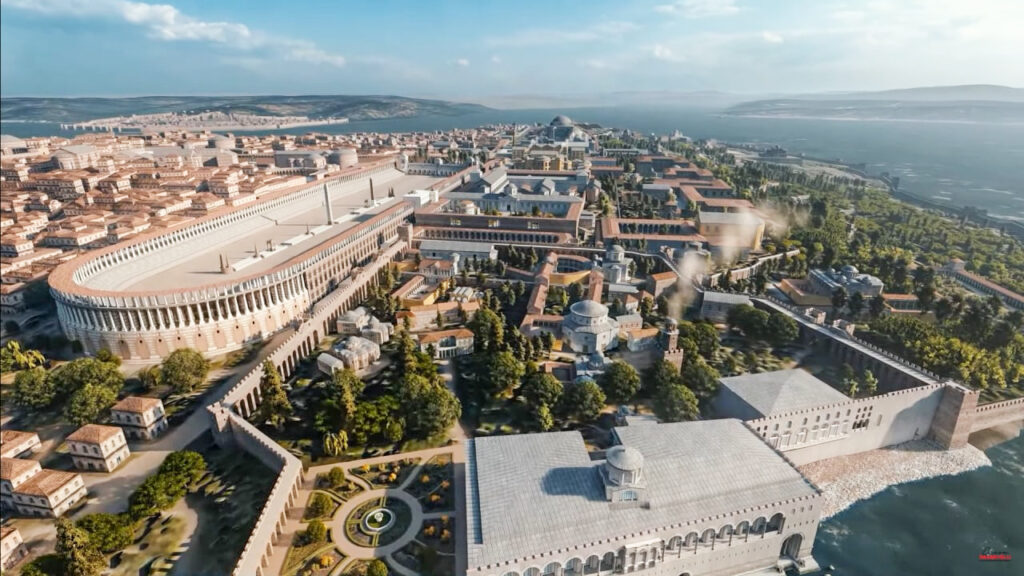
While the history of Istanbul goes as far back as the 7th century BC, when Greeks from Megara and Athens settled on the European side of the Bosphorus, it was the Roman Emperor Constantine who truly put the city on the map.
In a fateful move in 337 AD, he relocated the capital of the Roman Empire to Byzantium and then promptly renamed the city after himself.
Starting with Constantine, the young Byzantine Empire saw a number of powerful rulers in reasonably quick succession who continued to build and expand the capital.
Theodosius II rebuilt the defensive land walls around the city, Valens built the network of aqueducts, and Justinian gave Constantinople Hagia Sophia and the Basilica Cistern. Constantinople became a legendary city known all across the ancient world.
Yet for all its fame, today, many people wonder, where is Constantinople now? So did I, as I planned my trip to Istanbul. So I created this walking guide for myself to find as many traces of Constantinople in Istanbul as I could. And now, I am sharing it with you.
Constantinople Today
The power centre of Constantinople, comprising Hagia Sophia, the Hippodrome, and the Great Palace, was located in the modern-day neighbourhood of Sultanahmet. This is where you will find most of the surviving relics of Constantinople today.
Aya Sophia (Hagia Sophia)
Perhaps the most iconic image of Constantinople is the magnificent Hagia Sophia – the church of the Holy Wisdom. It is more than 1,400 years old, and the very fact that it still stands today is a testament to the power and sophistication of the 6th-century Byzantine Empire. Designed by a physicist and a mathematician, it has been the largest church in the world for nearly a thousand years.
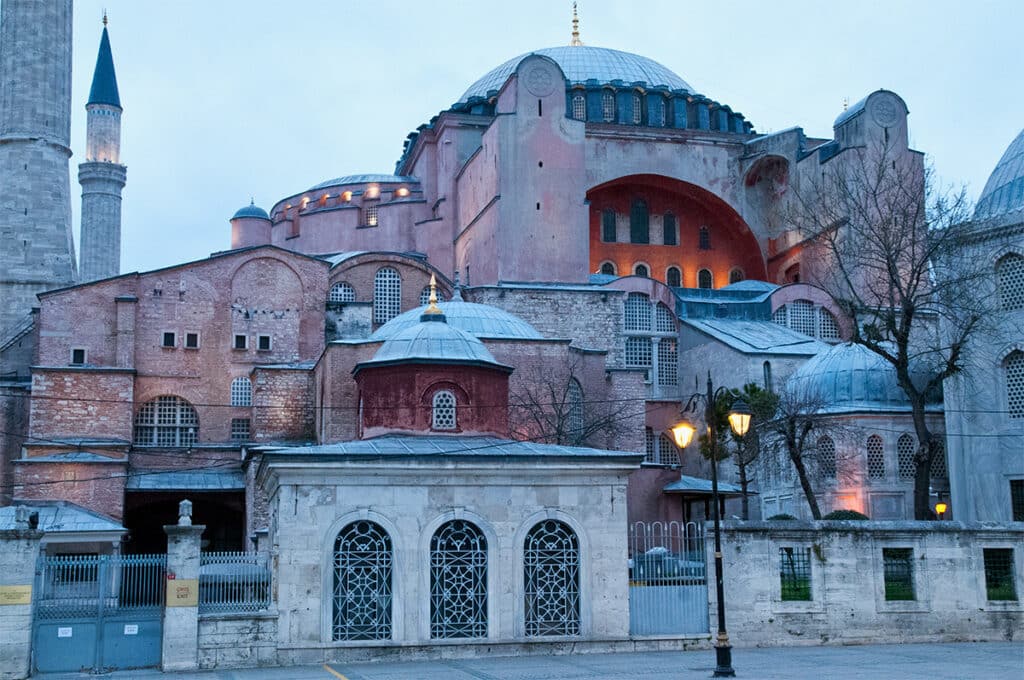
Standing in the dimly lit interior of Hagia Sophia, it is impossible not to be amazed by the sheer scale of the building. It feels larger than life. The lofty central dome seems to be frozen in mid-air, almost 56 meters above, which is about the height of a 15-storey building.
That dome is supported by two great semi-domes, which in turn rest on smaller semidomed porticos. Such an unexpected cascade of domes creates an impression of a surrealistic structure that shouldn’t be able to exist.
Gawking at this amazing structure is probably as close as you can come to experiencing Constantinople today. Just imagine how people would’ve felt underneath this dome 1,500 years ago.
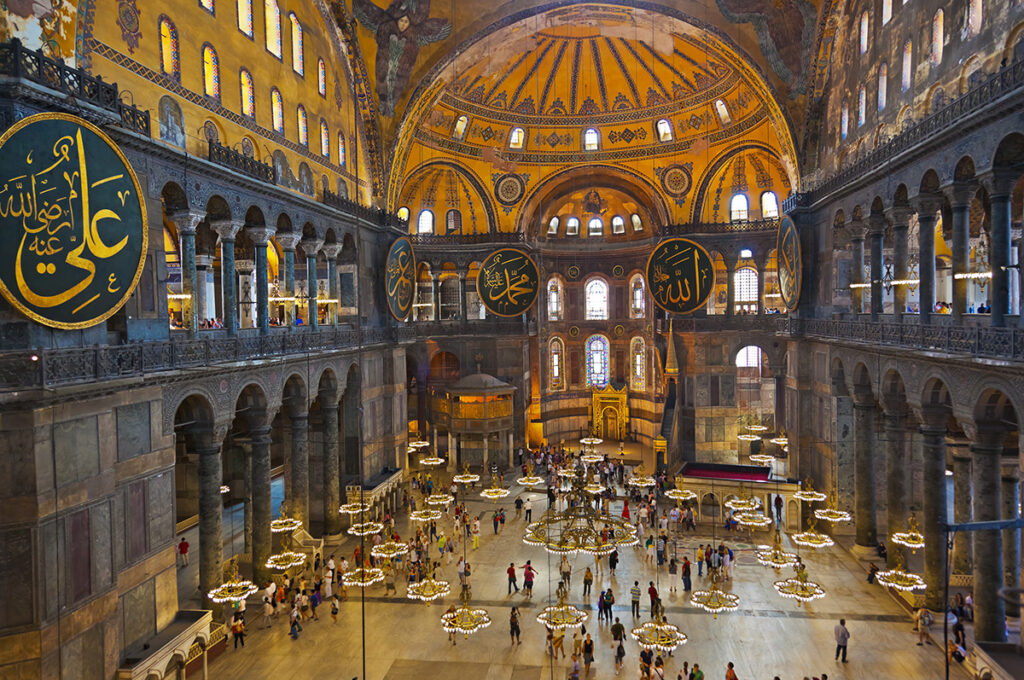
The immense nave of the church is flanked by the monolithic green and purple columns that support the upper gallery, where most of the surviving mosaics are found. Unfortunately, the gallery was closed during my visit. Though I still managed to see a couple of mosaics that miraculously survived to this day despite being painted over when the church was converted into a mosque during Ottoman rule.
Update: in July 2020, Hagia Sophia was converted from a museum to an active mosque by a Presidential decree. It is still open to the public outside of prayer times.
Best Hagia Sophia Tours
While it’s impossible not to be wowed by Hagia Sophia, if you would like to learn a little more about this magnificent structure and make sure you don’t miss anything, you could join an inexpensive 1-hour guided tour.
Or combine your visit to Hagia Sophia with the magical Basilica Cistern (more on the basilica below) on a combo tour of Hagia Sophia and the Cistern – the two structures are virtually next door to each other.
Hagia Eirene
Almost immediately behind Hagia Sophia, there is another Byzantine church that now lies on the grounds of the Topkapi Palace. Haghia Eirene, the church of the Divine Peace, was, according to tradition, one of the first Christian churches in the old town of Byzantium.
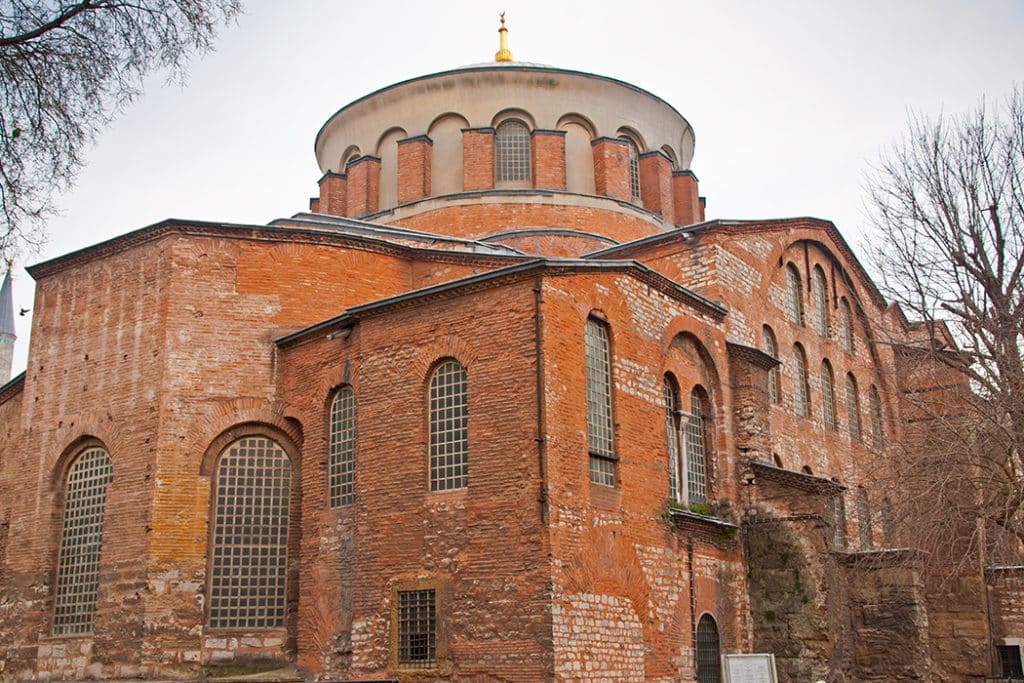
It has, of course, been rebuilt a number of times, with the current building dating back to 537, the same year when Haghia Sophia was re-dedicated by Justinian. Interestingly, Haghia Eirene was never converted to a mosque by the Ottomans.
Church of SS Sergius and Bacchus
Another Byzantine relic, the Church of SS Sergius and Bacchus, is tucked away on the other side of the Hippodrome, near the shore of the Marmara Sea, where Imperial Port and Bucoleon palace used to be.
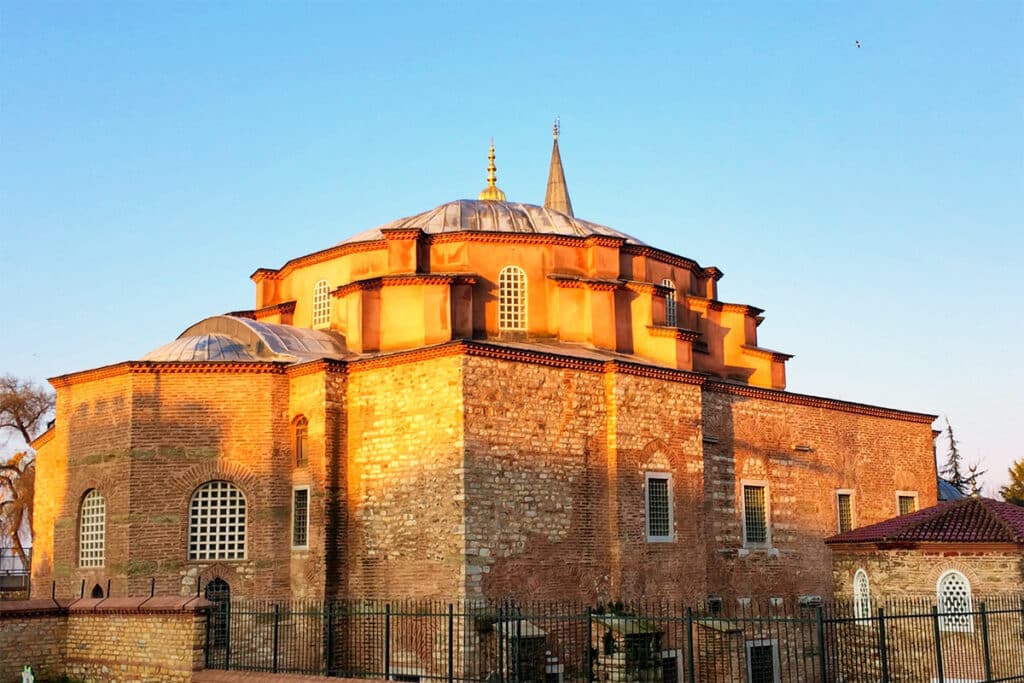
Known as Little Hagia Sophia, this church has an unusually irregular shape that gives the impression that the architects could not decide what style to follow. Perhaps it was an early experiment with a domed structure prior to the construction of Hagia Sophia.
Chora Church
One of the most interesting Byzantine churches in the city, however, is the Church of St. Savior in Chora. It is located further from the city centre and takes a little more effort to reach, but it is definitely worth the trouble.
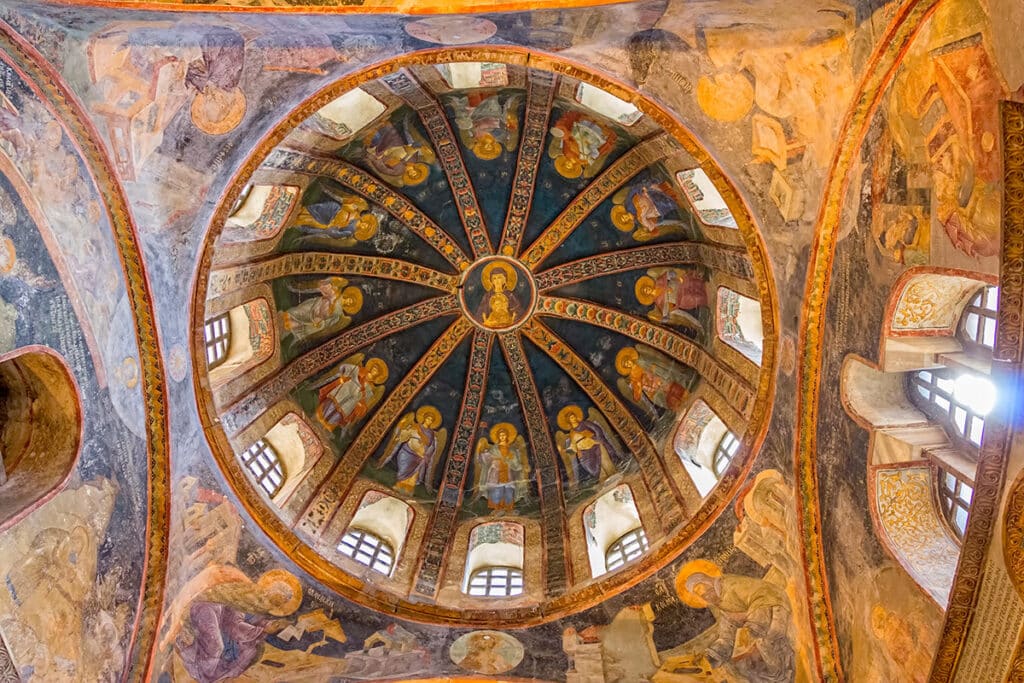
Tip: A very handy Trafi app provides detailed information on public transport options in Istanbul. And the portable WiFi device is a very useful device for using your phone’s GPS on the road (you can pick it up at the Airport).
The Chora Church is interesting not so much for the building itself, which happened to be hidden behind the scaffolding when I visited, but for the stunning mosaics that it preserves within its walls.
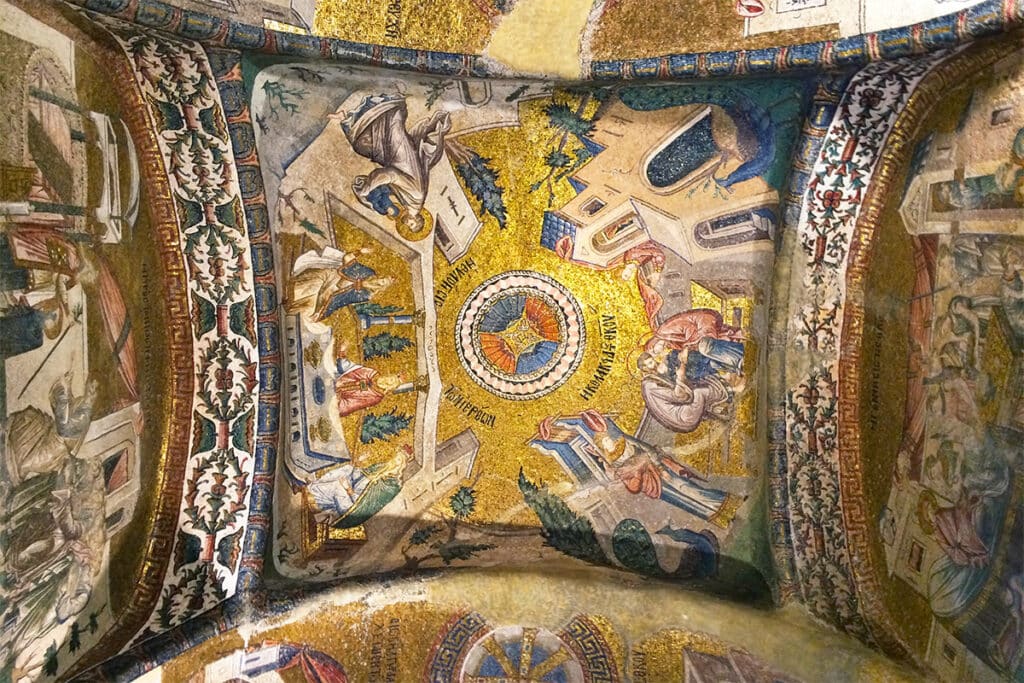
It was built in an effort to restore the glory of Constantinople after the city was sacked by the Latin soldiers of the Fourth Crusade in 1204. And it appears that no effort or expense had been spared in the creation of this masterpiece. The mosaics in Chora are jaw-droppingly beautiful. And they are old. They immediately draw you in.
And this beauty is all the more remarkable for the surprise you feel from finding it in such an out-of-the-way location, among a maze of backstreets, so far away from the splendour of Sultanahmet.
Best Chora Church Tour
Of course, if wondering on the fringes of an unfamiliar city is not your type of adventure, you can visit Chora church on this wonderful full-day tour of Byzantine Monasteries in Istanbul.
Pantokrator Monastery
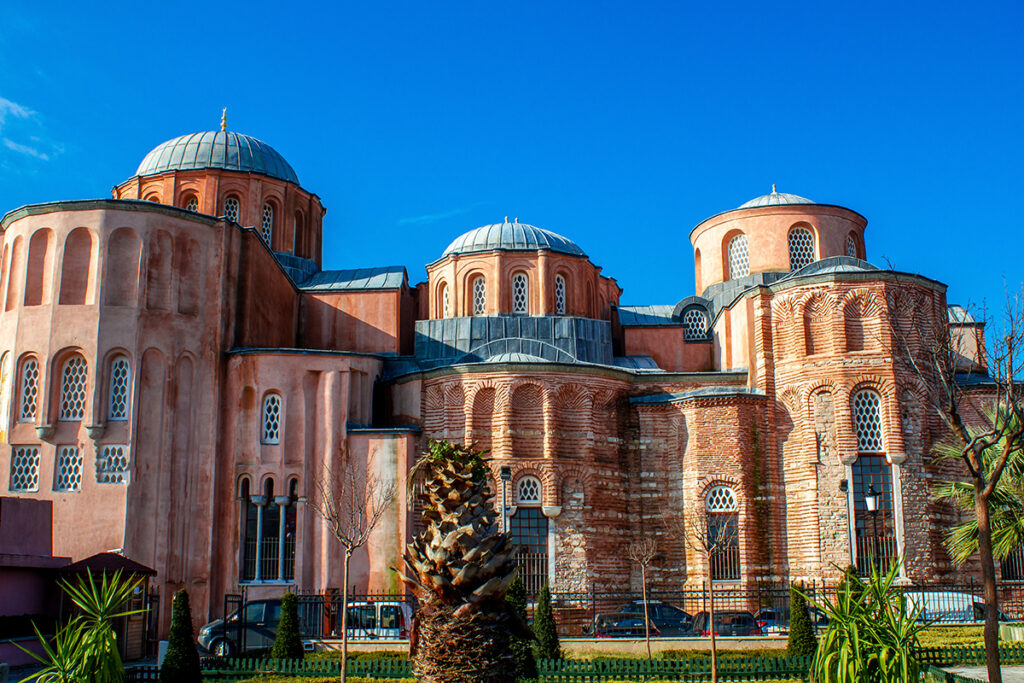
Like many other Ottoman mosques in Istanbul, Zeyrek Camii was initially built as a church. Or rather, two churches next to each other, both built in the 12th century. Known as Pantokrator Monastery in Byzantine times, it was the second-largest religious building in the empire after Hagia Sofia.
Surprisingly, even though the monastery is a UNESCO world heritage site, it is often overlooked by visitors, overshadowed by the city’s more iconic sites.
Unlike Hagia Sophia, with its minarets and surrounding Ottoman structures, Zeyrek Mosque looks distinctly Christian on the outside. The striking contrast between the Christian exterior and Muslim interior of the mosque makes Zeyrek Camii creates the same unexpected effect as Cordoba‘s Mosque-Cathedral in Spain.
Hippodrome of Constantinople
While Haghia Sophia was the centre of the religious life of Constantinople, the Hippodrome was the heart of the city’s social and sporting activities. Built as the venue to house chariot races, it had the capacity to hold a hundred thousand spectators.
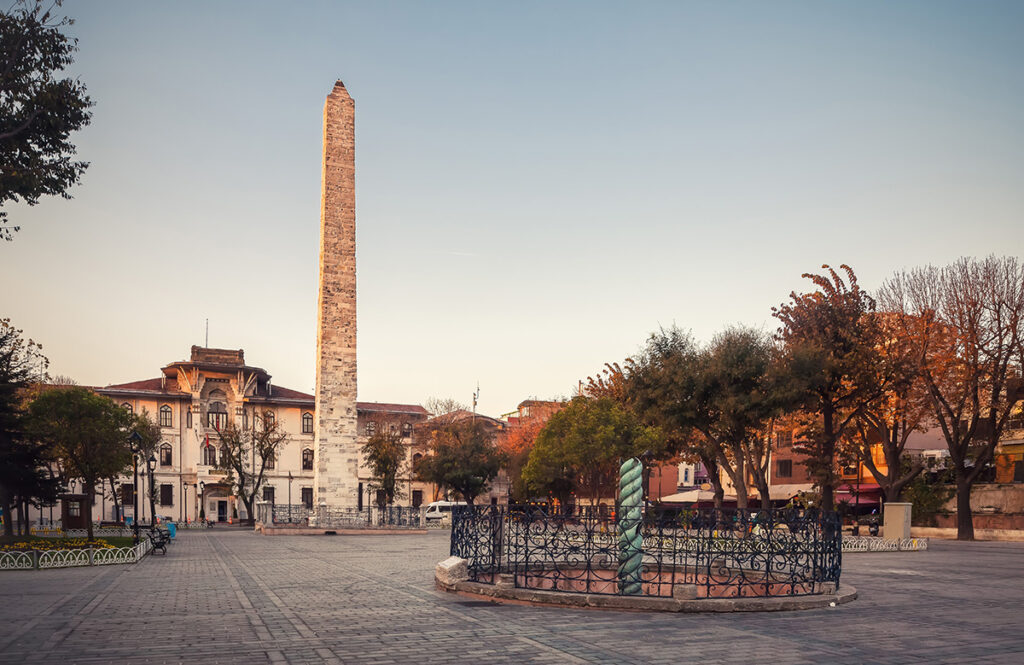
Sadly, all that now remains of the Hippodrome are the three pillars that used to be part of its spina – the central line around which the chariots raced. The rest of the relics of this great structure are buried about 2 meters below the current street level.
The bases of the pillars, sunken deep into the pavement, give a good indication of just how thick is the layer of human civilization that has supposedly accumulated on top of the ancient foundations of the Hippodrome.
Despite most of the Hippodrome having turned to dust, the remaining obelisks provide an interesting opportunity to explore the traces of Constantinople today.
Obelisks
The most impressive of the remaining structures is the Egyptian Obelisk. It was constructed in the 16th century BC and originally stood in the Karnak temple in Egypt. While it looks quite intact, it is thought to be only about 1/3 of its original size. Of course, no one would have expected anything less from Ancient Egypt.
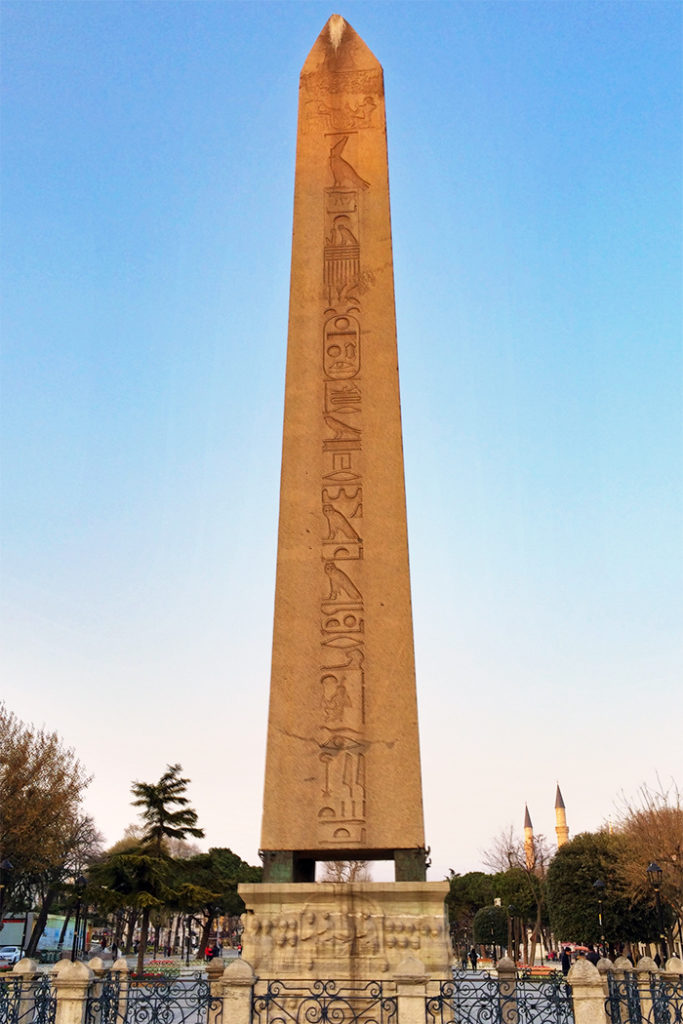
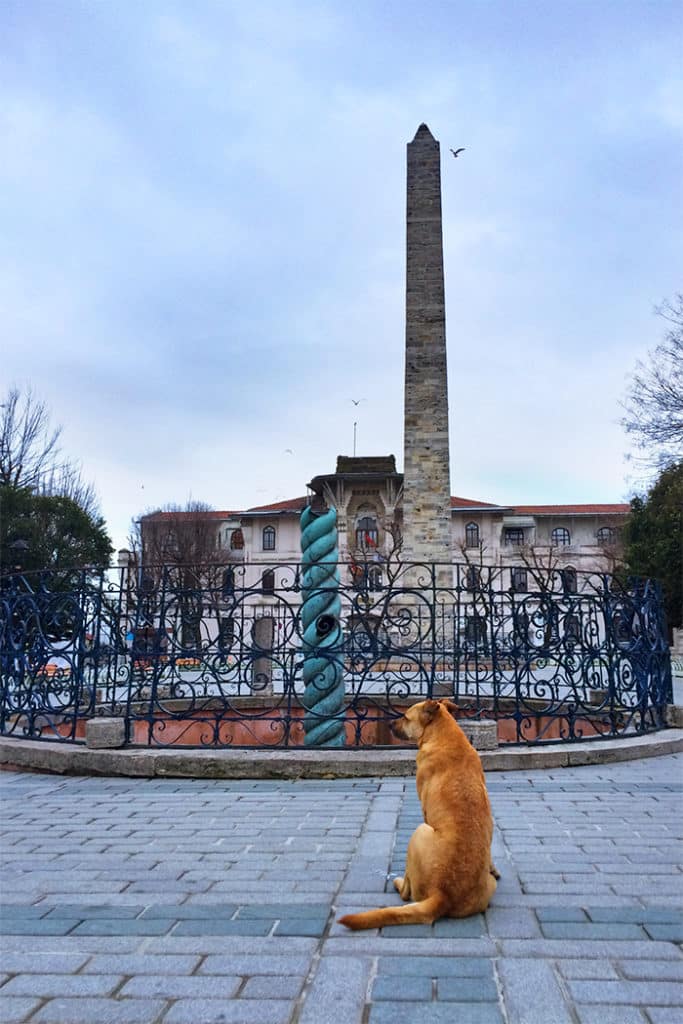
Next is the Serpent Column, which originally stood in the Temple of Apollo at Delphi. The legend has it that the serpents were cast from the shields of the fallen Persian soldiers after the battle of Plataea in 479 BC. The heads of the serpents are now missing, though one of them can be seen in the Archaeological Museum.
The origin of the third column is not known for certain. It is referred to as the Walled Obelisk and was originally covered in bronze plaques that were stolen by the Crusaders in 1204.
Just past the northern end of the Hippodrome, there is another ancient column – the Milion, which in fact, is not a column at all, but the remnants of the Byzantine triumphal arch from which all roads in the empire were measured.
If you get weary by the time you get to the Hippodrome, this is a good place to have a break in one of the cafes, sample some of Turkey’s delightful street food or have a proper meal to fuel you up for the rest of the walk.
The Column of Constantine
The oldest monument of Constantinople, the Column of Constantine (image in the gallery above), is as old as the city itself. It was dedicated by Constantine in 330 AD to commemorate the declaration of Byzantium as the new capital city of the Roman Empire.
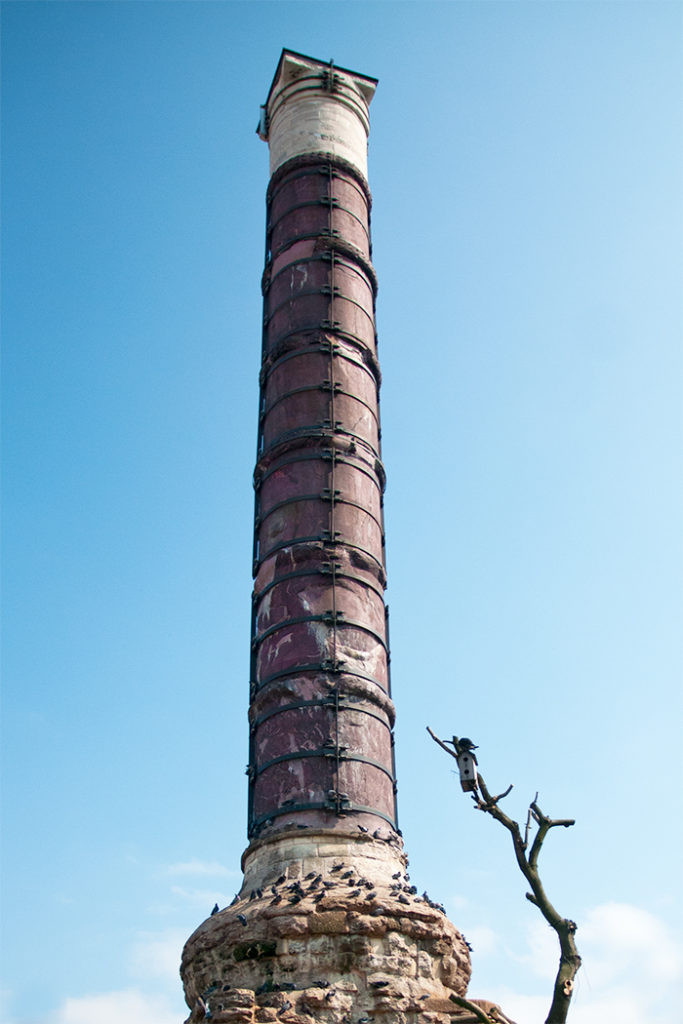
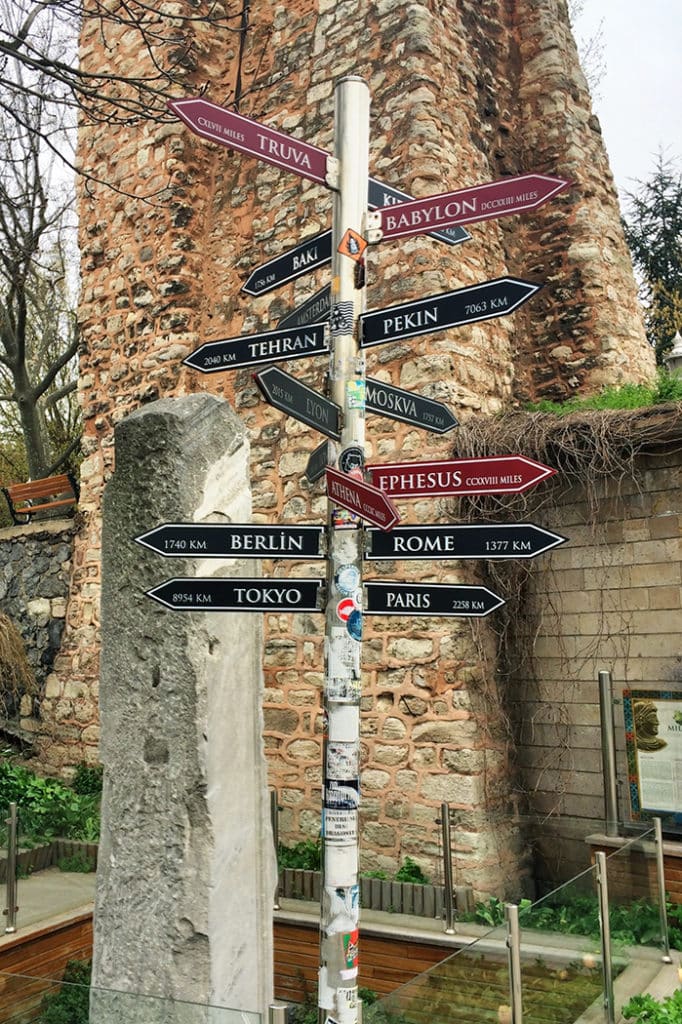
One and a half thousand years later, it is still an imposing structure that stands halfway between Sultanahmet Park and the Grand Bazaar. It is the only remnant of the Forum of Constantine that used to mark the centre of the ancient city.
Originally, the column was topped by the statue of Constantine and its base supposedly contained all sorts of interesting early Christian relics, such as a fragment of the True Cross. But of course, whatever relics the column contained, they were all plundered by the Crusaders.
Valens Aqueduct
Like everything else in Constantinople, its water supply system was built on a grand scale. The original 150 km-long water channel was commissioned by Emperor Valens and took nearly 30 years to build.
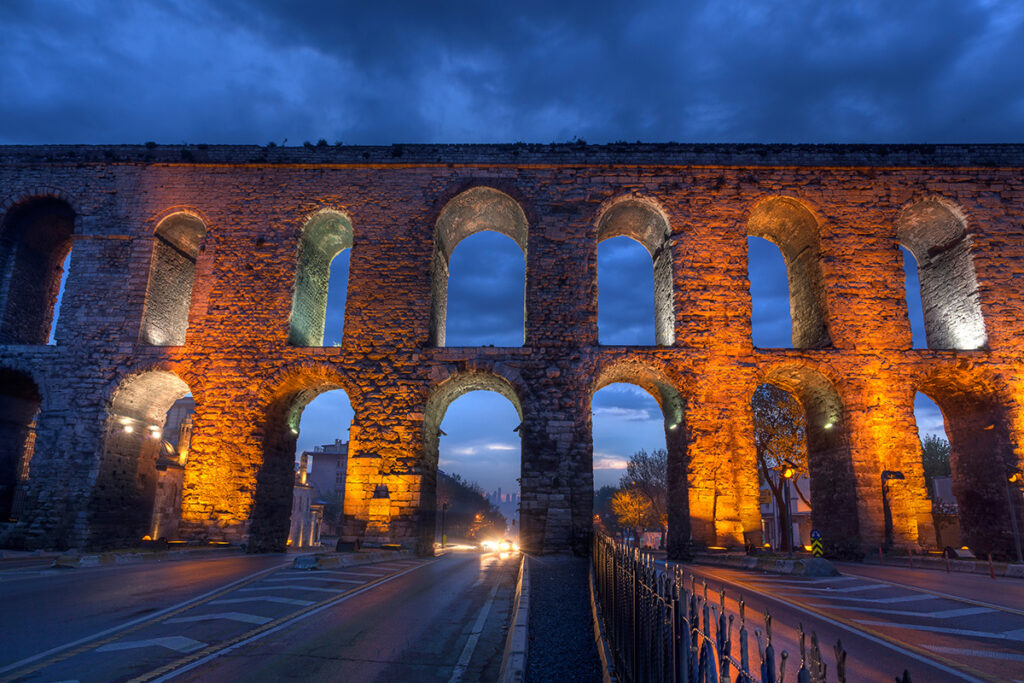
It brought water into the city from the surrounding countryside along underground tunnels and colossal stone aqueducts. One of these aqueducts towers over the Atatürk Bulvarı in modern-day Istanbul.
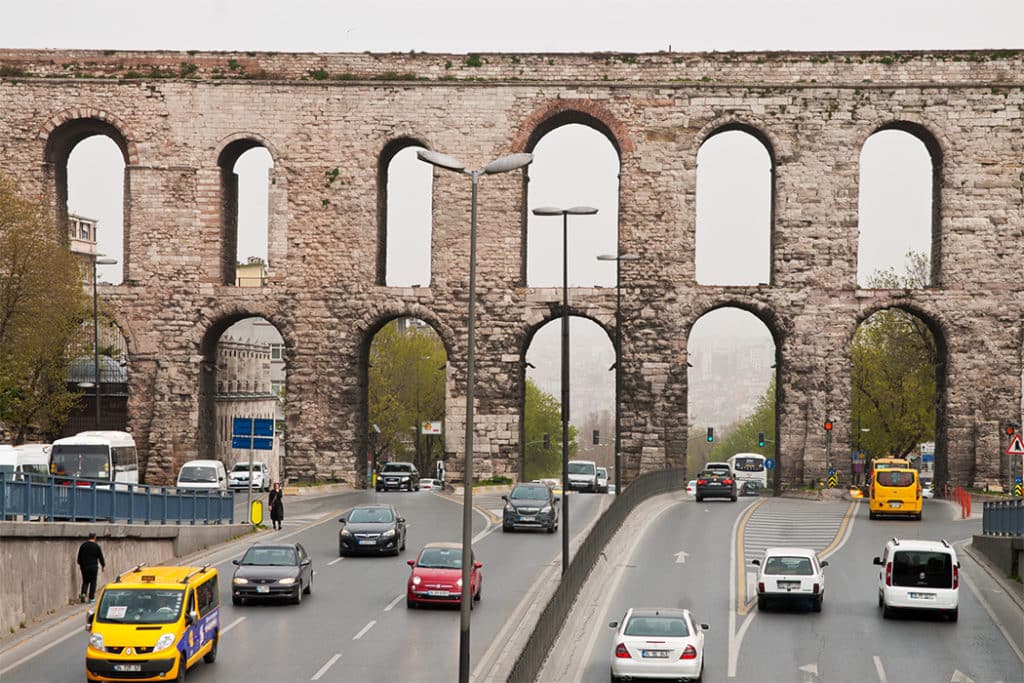
To store water in the city, Emperor Justinian I built a network of underground cisterns. Basilica Cistern, just across the park from Hagia Sophia, is one of the most interesting examples of Byzantine architecture in Istanbul and one of my favourite places in the city.
Basilica Cistern
It has such an unassuming entrance that it is easy to miss. But walk a couple of flights of stairs down from the street level, and you enter a different world. The cistern is essentially a subterranean cavern filled with endless rows of ancient columns that support a vaulted ceiling reflected in the still, dark water below.
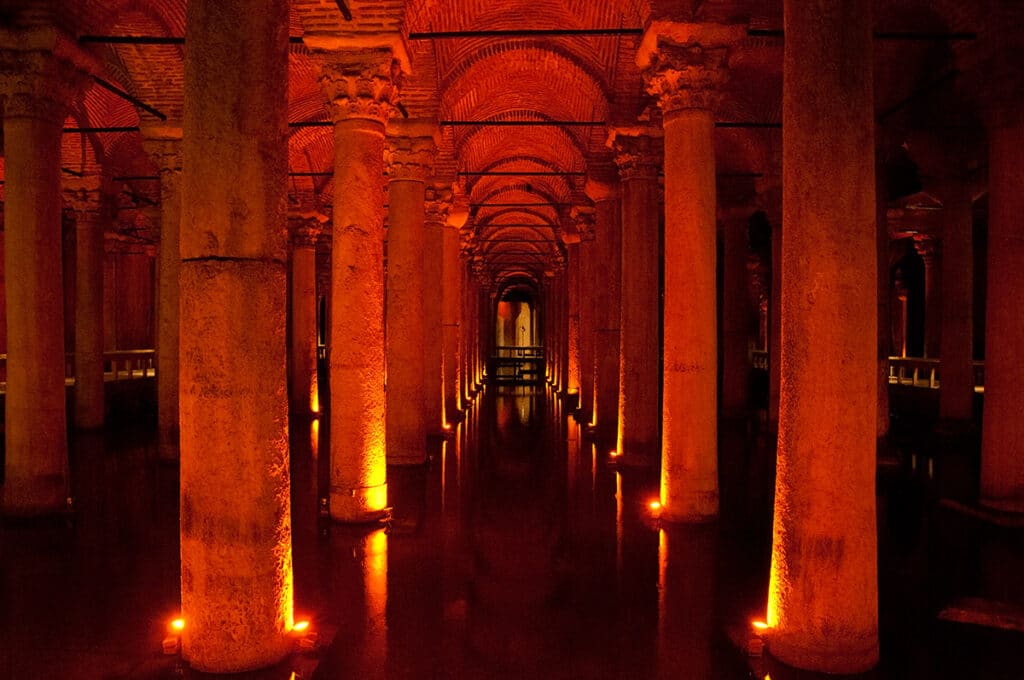
The first few ranks of the colonnade are lit by the spotlights that bathe the cavern in soft red light, allowing the back rows to melt into the darkness. The sounds of the water dripping in the dark and of wistful Turkish classical music in the background give the place an air of mystery and solitude.
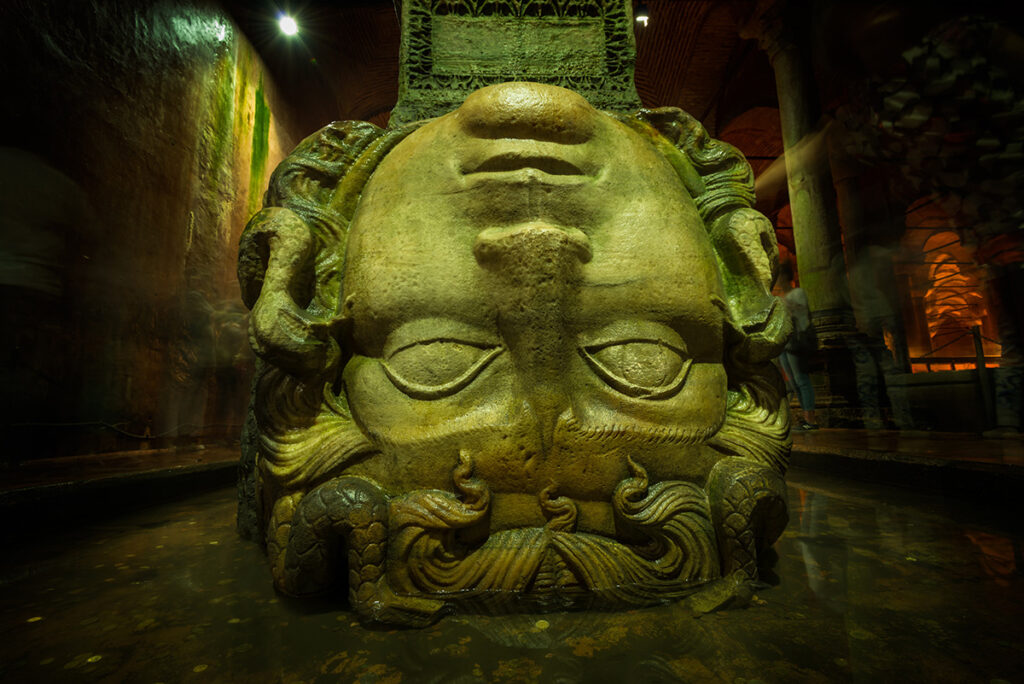
It truly is a fascinating structure. The columns, of which there are 336 in total, are all mismatched, and it is most likely that they have been recycled from old Roman ruins throughout the empire. The two Medusa heads that are used to support the columns at the far end of the cavern were probably brought from an early Roman pagan temple, quite possibly from the Forum of Constantine.
You might recognise the Basilica cistern from the Inferno movie – this is where the plague was going to be released – in the water at the bottom of the cistern.
Theodosius Cistern
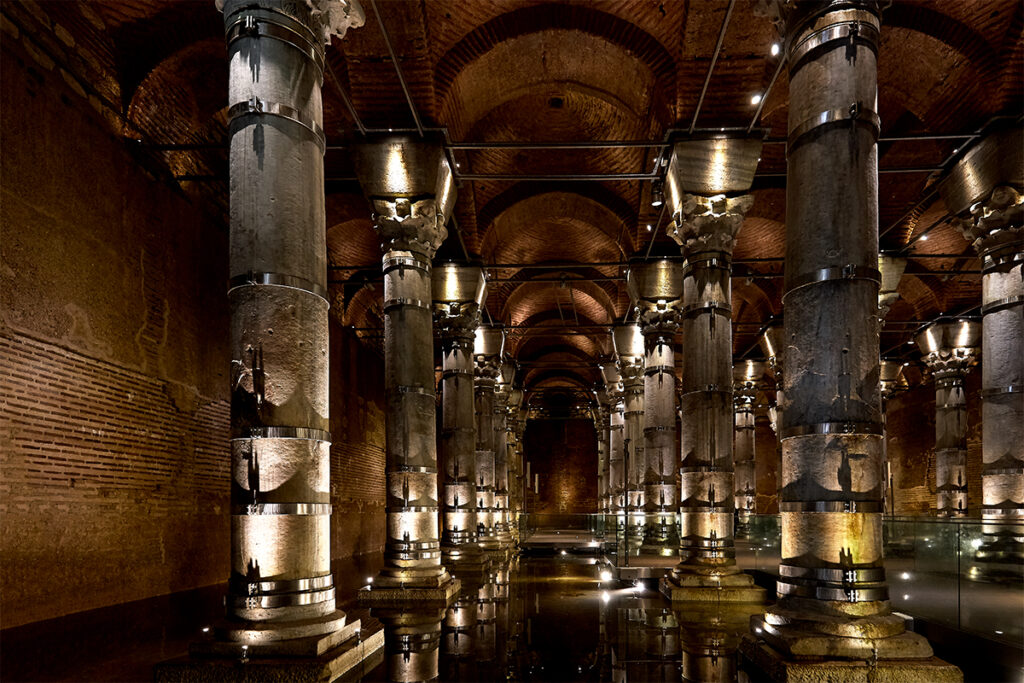
The Theodosius Cistern is another ancient cistern of Constantinople, concealed beneath the streets of Istanbul. And while most visitors to Istanbul are familiar with the Basilica Cistern, the Theodosius Cistern only opened to the public in 2018, and it remains a bit of a hidden gem in Istanbul.
It was built It was built by Roman Emperor Theodosius II, the same Theodosius who built the Land Wall, and was used for storing water delivered to the city by the Valens Aqueduct. Theodosius cistern has the same mystical atmosphere as Basilica cistern, and it’s located just a 5-min stroll away. So if you enjoyed visiting Basilica cistern, don’t miss its Theodosian cousin.
The entrance to Theodosius cistern is located underneath a modernist building at Piyer Loti Caddesi No: 2/1 – another unexpected fusion of old and new in Istanbul.
The Walls of Constantinople
One of the main reasons Constantinople flourished for as long as it did, outlasting the western Roman Empire by a thousand years, is that since its founding, the city has been surrounded by defensive walls on all sides – the famous Constantinople walls. Initially, Constantine built the walls around early Constantinople, and as the city outgrew its boundaries, Theodosius II built the colossal land walls that survive to this day.
Land Wall of Constantinople
A decent portion of the land walls survives near the Chora Church in the Edirnekapı neighbourhood. The neighbourhood, in fact, takes its name from Edirnekapi Gate in the wall that you have to go through to get to the church.
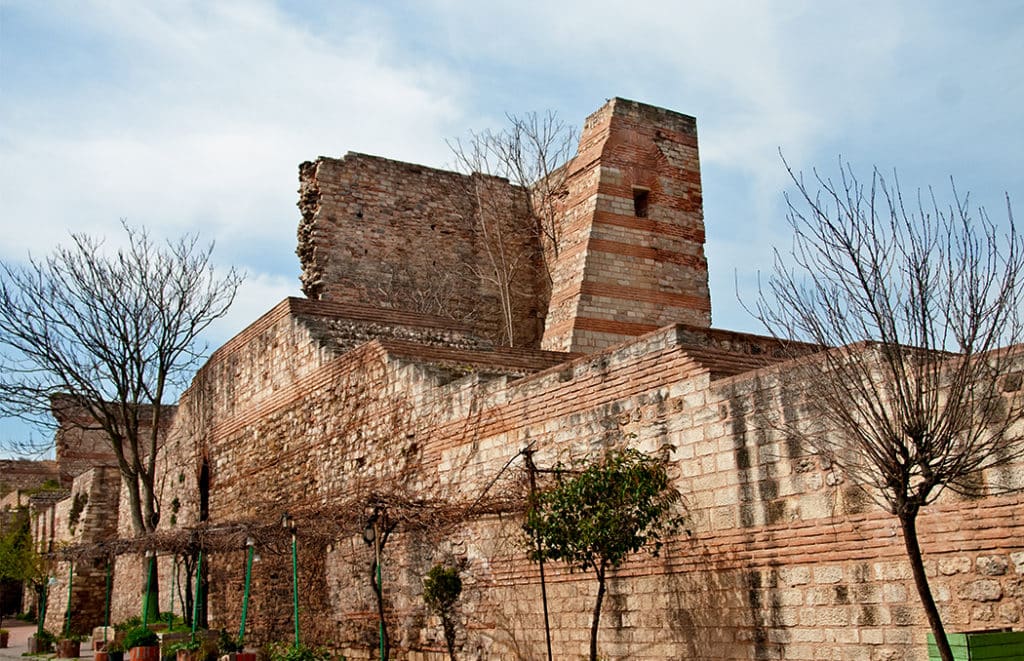
This neighbourhood is one of the poorest in Istanbul, and the remnants of Constantinople walls are often inhabited by squatters. Because of that, the guidebooks do not recommend visiting this area independently. I didn’t have any problems walking around, even though I managed to get lost and had to ask for directions a few times. But the inner fortifications of the wall do have a rather unpleasant smell to them.
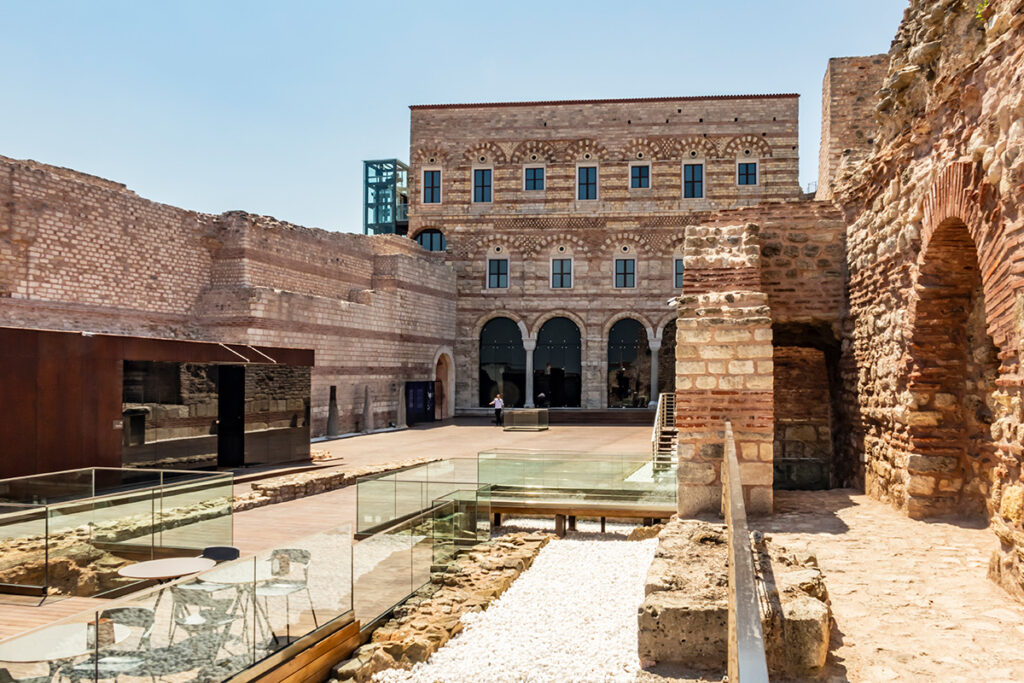
The most interesting part of this section of the wall is the remnants of the Palace of Constantine Porphyrogenitus (Tekfur Saray in Turkish). This palace became the Royal Residence of Constantinople in the 12th century when Manuele moved the permanent residence of the imperial court here from Bucoleon Palace on the shore of the Marmara Sea.
Sea Wall of Constantinople
The Sea Wall, especially the Propontis Sea Wall that follows the shoreline of the Marmara sea, is much easier to access. It wraps around the Seraglio Point below the Topkapi Palace and runs along Kennedy Avenue – the road most taxi drivers take from either Sabiha Gökçen or Atatürk airports to Sultanahmet.
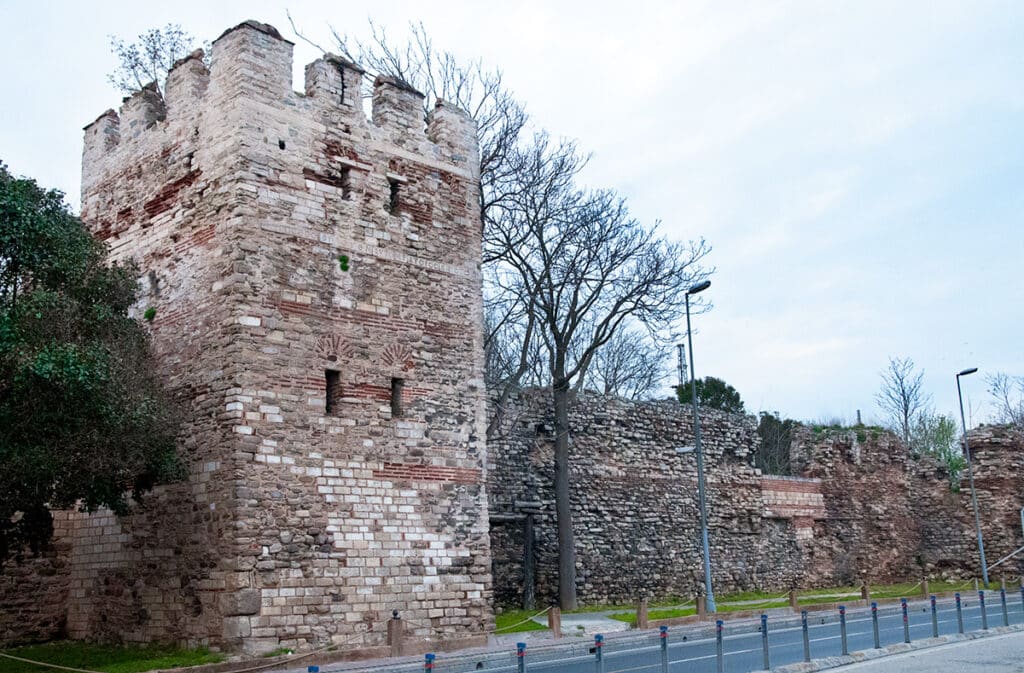
It can be reached by a stroll along the back streets of Sultanahmet, past the church of SS Sergius and Bacchus.
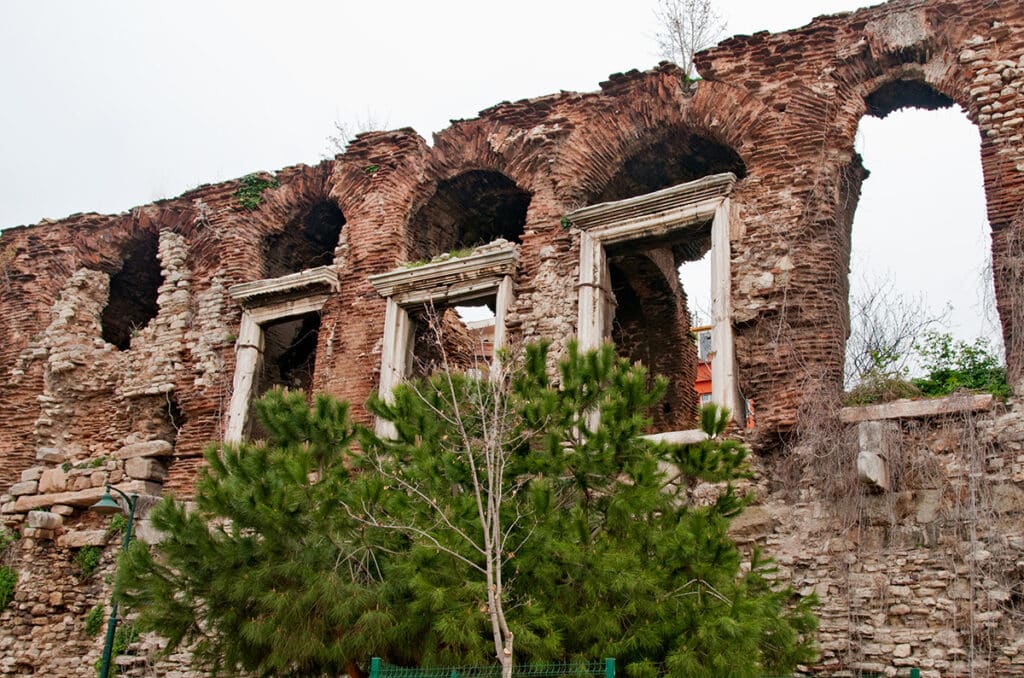
Not far from the church are the remnants of Bucoleon Palace. Part of the Great Palace of Constantinople complex, Bucoleon was the power seat of the early Byzantine emperors. Now all that remains of the palace is a fragment of a single wall pierced by enormous windows with marble frames and some traces of a balcony that looked out to the sea.
Galata Tower
The last defensive installation of Constantinople was the great iron chain that could be stretched out across the Golden Horn to prevent enemy ships from entering the harbour. The northern end of the chain was anchored at the original Galata Tower, which was destroyed during the sack of Constantinople in 1203. The chain, or rather a part of it, can still be found in the Archaeological Museum in Istanbul.
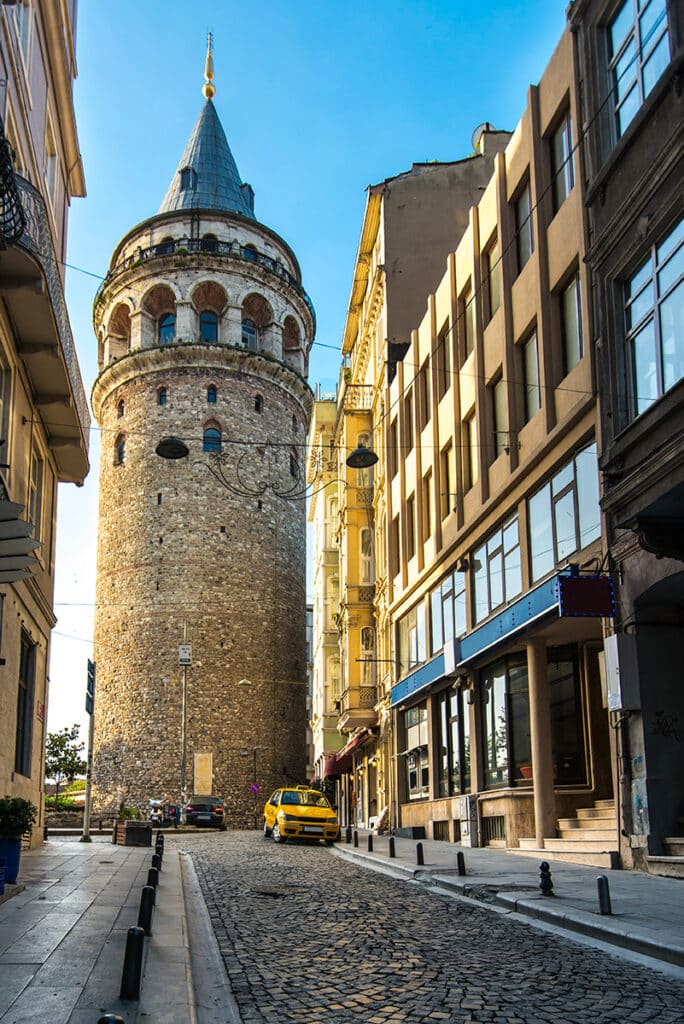
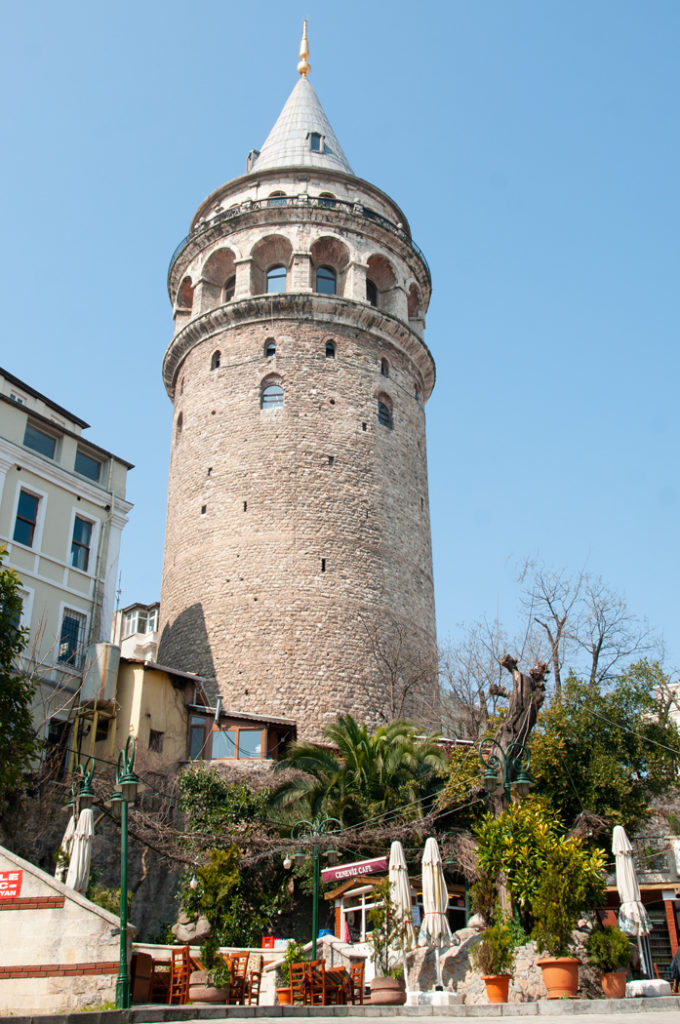
Later, in the fourteenth century, the new Galata Tower was built on the northern side of the Golden Horn. This tower has survived to this day and has become one of the most iconic landmarks of Istanbul.
At the end of the day, despite the best efforts of the Crusaders and the Ottomans, there are enough Byzantine relics left in Istanbul to re-create the image of Constantinople now.
Standing on the shore of the Marmara sea, I could easily imagine the view that greeted the ancient seafarers as they arrived at the port of Constantinople. The magnificent Bucoleon palace rises right out of the sea framed by the monolithic Constantinople walls, the great dome of Hagia Sophia towering above them.
Inside those walls, the city was not dissimilar to ancient Rome with its grand Hippodrome, public forums, and mammoth aqueducts – colossal structures reflecting the awesome power and riches of the ‘god-appointed’ emperors.
Now that you know where to find Constantinople today, see how many relics of the great city you can track down on your explorations of Istanbul.
Where to Stay in Constantinople/Istanbul
Since most of the remnants of the ancient city of Constantinople are located in the Sultanahmet neighbourhood, this is the perfect base for exploring the Byzantine legacy of Istanbul.
To wrap yourself in luxury like a Byzantine emperor, consider the award-winning White House Hotel. Located a stone’s throw from Hagia Sophia, the hotel has fantastic views of it from the terrace.
For something more traditionally Turkish, you can’t go wrong with the wonderfully atmospheric Henna Hotel.
And if you like properties with an artistic, quirky touch – you will love the Hotel Poem. It has a young and playful atmosphere and light-filled interiors.
More on Exploring Istanbul
- 11 Best Cafes in Istanbul to Experience the Centuries-Old Cafe Culture
- Guide to Vising Topkapi Palace & Harem: Sultans and Concubines
- How Many Days in Istanbul is Enough? Guide to Exploring the City
- 16 Charming Istanbul Hidden Gems and Underrated Sites
- 3 Umbrella Streets in Istanbul – Colorful Urban Sanctuaries
- Where to find Constantinople Today: On the Trail of Constantinople in Istanbul
- Finding Birds in Istanbul without Looking for Them

